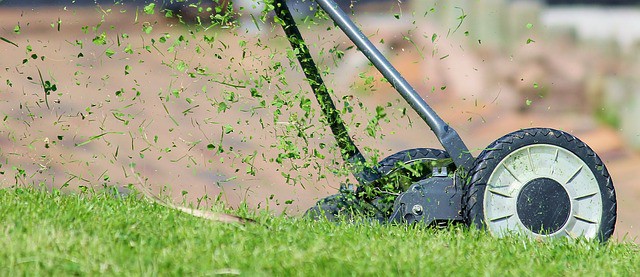To set up the best lawn maintenance schedule, you must determine your lawn type. Then, you can provide year-round lawn care, including fertilization, soil testing, mowing, watering, aeration or dethatching, weed control, and application of herbicides, fungicides, and insecticides.
If you hope to enjoy a healthy, green lawn, you must ensure proper lawn maintenance. My experience and knowledge gathered over years of research and inevitable trial and error can help you determine your lawn type and set up the best annual lawn care schedule to prevent or remedy every problem.
What Should The Best Lawn Schedule Include?

There is no better way to determine what proper law maintenance should include than looking at what professionals do! So, I resorted to reading an article on this subject, written by Dr. Anthony J. Koski, an Extension Turfgrass Specialist, and John R. Street, an Associate Professor Emeritus at the Department of Horticulture and Crop Science of the Ohio State University Extension. From them, I found out that professional lawn care service implies:
- Soil Testing
- Fertilization
- Mowing
- Watering
- Soil Cultivation: Aeration & Dethatching (1-2 times per year)
- Weed Control: Preemergence (2 times per year) and Postemergence (1-2 times per growing season, or as needed )
- Insects, Lawn grubs, And Disease Control (as needed)
According to the same authors, when needed, a lawn care program can include spot re-seeding and re-sodding. So, if professionals do all this, it is what we should do too! Let’s take a closer look at the most vital lawn maintenance elements from this list.
Fertilizer Application & Soil Testing

According to W.R. Kussow, S.M. Combs, A.J. Sausen, and D.J. Soldat from the University of Wisconsin-Madison, fertilization is a vital element of a lawn management program. To do it properly, you first must assess your lawn’s fertilizer needs by taking a soil sample once a year.
From my experience, a certified soil testing laboratory, such as the N.C. Department of Agriculture’s soil testing lab in Raleigh, tells you what your lawn needs and which fertilizer to use for the best possible results. It also advises you when and how often to fertilize your lawn.
As I read in this article, soil testing also includes measuring the soil’s pH, which shows the acidity or alkalinity of your soil. If the pH is too low, you’ll receive recommendations to use lime (it should be applied from May to August). Alfredo Martinez, Lee Burpee, and Tom Allen, from the University of Georgia, also suggest applying fungicides as a preventive measure.
I usually fertilize my lawn 2-4 times per year (depending on the soil analysis). In some states, such as Maryland, fertilization is regulated by law (in this case, the Maryland Department of Agriculture). So, check your state regulations.
Extra Advice:Don’t forget to mention whether the soil sample is taken from a new or established lawn. As I learned from the already-mentioned experts from the University of Wisconsin-Madison, laboratory recommendations might differ significantly.
Mowing & Watering

I use my lawn mower once a week during the intensive growing season of my grass (this can be in early/late spring or early summer, depending on your climate). After that, I switch to mowing every two weeks, and then once a month at the end of the season.
According to a pamphlet issued by Seattle Public Utilities in collaboration with turf professionals and scientists, you should set your mower blades to the mowing height of 2 – 3 inches for most lawns. As read, this fosters strong root growth and drought and
disease resistance.
The USA Environmental Protection Agency states that your lawn typically requires one inch of water a week, including rainfall. Overwatering may increase the need for pesticides and fertilizers. No need to water or mow during the winter dormancy!
Determining Your Lawn Type
It doesn’t matter if you want to hire professionals to take care of your lawn, or you do it yourself – you first have to determine your lawn type. Why?
As I read in an article published by Pennington, a company that has bred grass seed since 1945, the climate zone you live in has a great influence on what type of grass can thrive in your region. If you want a great-looking lawn with no dead grass, you must match the best cool or warm-season grass to your zone and then maintain it properly.
While browsing through some lawn care products on the DoMyOwn online retail website, I found a list of the most common cool-season and warm-season grasses in the USA. There are also so-called blend grasses (mixtures of cool and warm season grasses) used in the transition zone states.


